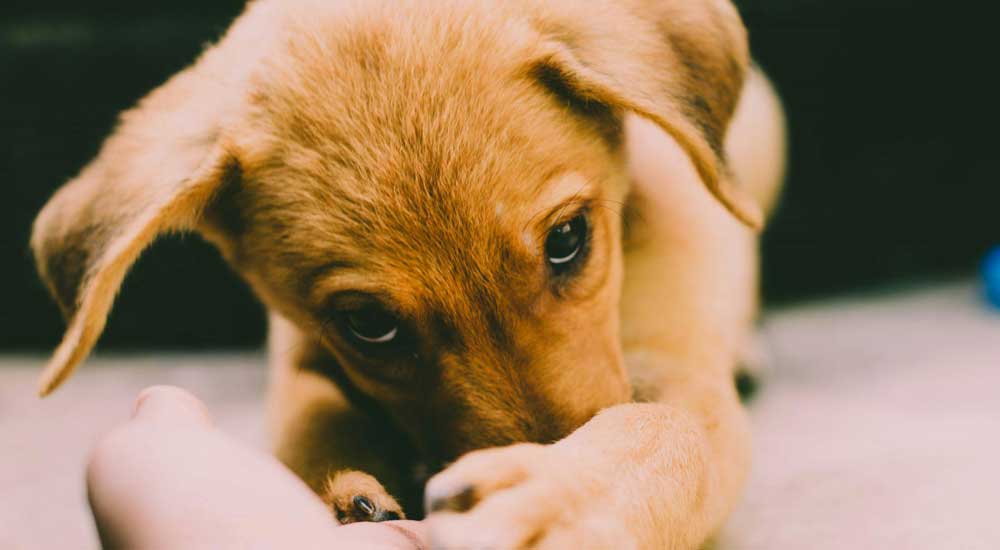
How Much Time Should I Spend With My Puppy Each Day?
Share
How Much Time Should I Spend With My Puppy Each Day?
Bringing home a new puppy is one of the most exciting—and time-consuming—experiences of your life. Between feeding, training, cuddling, and cleaning up, you might be wondering:
“How much time should I really spend with my puppy each day?” The answer depends on your puppy’s age, breed, energy level, and developmental stage—but one thing is certain: puppies require a lot more attention than most people expect.
In this blog, we’ll break down:
- How much time your puppy needs daily (by age)
- What kind of attention counts as “quality time”
- How to balance alone time for healthy independence
- Sample daily routines
-
Tips for busy owners
…and a few bonus insights from PawReady.com—because being “paw ready” means being prepared not just financially, but emotionally and practically for puppy parenthood.
Why Time Together Matters
Puppies are like toddlers—they’re learning everything for the first time: how to walk on a leash, what’s safe to chew, and how to communicate with you. The more time you spend, the faster they learn and the stronger your bond grows.
Time together supports:
- Socialization – Getting used to people, animals, sounds, and environments.
- Training – Puppies learn best through repetition and consistency.
- Emotional development – They gain confidence and trust when you’re nearby.
-
Exercise and health – Regular play keeps their growing bodies strong.
-
Routine building – Consistency helps them understand what’s expected.
In other words, time is training—every interaction teaches your puppy something.
🐶 How Much Time Puppies Need by Age
Here’s a general guide for how much attention and active engagement your puppy needs per day. Keep in mind: this includes interactive time (training, play, walks, etc.)—not just being in the same room.
|
Puppy Age |
Total Time Needed |
What That Looks Like |
|
8–10 weeks |
6–10 hours of interaction spread throughout the day |
Multiple short play and training sessions, frequent potty breaks (every 1–2 hrs), supervised naps |
|
3–6 months |
4–6 hours |
2–3 training sessions, a few walks, short playtimes, and socialization with people/pets |
|
6–12 months |
2–4 hours |
Longer walks, basic obedience, off-leash time, interactive games |
|
1 year+ (adolescent) |
1.5–3 hours |
Daily exercise, reinforcement training, mental enrichment |
Rule of thumb:
A young puppy can only be left alone for about one hour per month of age. So:
● 2-month-old = max 2 hours alone
● 3-month-old = max 3 hours alone
…and so on, until they reach adult independence (~6 hours).
What Counts as Quality Time?
It’s not just about being home—your puppy needs active, focused engagement. Here’s what to include in your daily routine:
1. Training Sessions (15–20 minutes total)
Short, consistent sessions teach commands and manners. Start with basics like sit, stay, come, and leash walking.
Use positive reinforcement—praise, play, and treats.
Pro tip: Keep sessions under 5 minutes each to match your puppy’s attention span.
2. Playtime (1–2 hours)
Play builds trust and burns energy. Use fetch, tug toys, and puzzle games.
Variety matters—mix physical and mental stimulation.
3. Walks & Exercise (2–3 short sessions daily)
Start with gentle, age-appropriate walks.
Avoid over-exercising young pups (their joints are still developing).
4. Socialization (daily)
Expose your pup safely to new sights, sounds, and people.
It helps prevent fear and anxiety later in life.
5. Cuddles & Calm Time
Quiet snuggles and gentle petting teach your puppy to relax and bond.
Yes—resting together counts as quality time.
Alone Time: Teaching Independence
While puppies thrive on attention, they also need to learn to be alone—otherwise, they can develop separation anxiety.
Start early:
- Give them short, positive alone experiences (5–10 minutes at a time).
- Use a crate or playpen with safe toys.
- Don’t sneak away; make departures calm and routine.
-
Gradually lengthen the time apart.
By teaching your puppy to self-soothe, you’re setting them up to feel secure even when you’re not home.
Example Daily Routine for a 10-Week-Old Puppy
Here’s a sample schedule to help visualize how your day might look:
|
Time |
Activity |
|
7:00 AM |
Wake up, potty break, breakfast |
|
7:30 AM |
Short play session / training |
|
8:00 AM |
Nap time |
|
10:00 AM |
Potty + walk around the yard |
|
10:30 AM |
Training session (5 min) + cuddle time |
|
11:00 AM |
Nap |
|
1:00 PM |
Potty + lunch (if still on 3 meals/day) |
|
1:30 PM |
Play session / toy time |
|
2:30 PM |
Nap |
|
4:00 PM |
Potty + walk + training practice |
|
6:00 PM |
Dinner |
|
7:00 PM |
Play, brushing, or light socialization |
|
8:30 PM |
Wind down, potty, bedtime routine |
Puppies sleep up to 18–20 hours per day in the early weeks. Sleep is part of healthy development, so don’t worry if they crash after every activity.
What If You Work Full-Time?
Many new owners worry: “How can I manage a puppy if I have a job?”
You’re not alone! Most people can make it work with planning and support.
Options:
- Midday dog walker or pet sitter for potty and play breaks.
- Puppy daycare (great for socialization, but can be pricey).
- Crate training for safety when unsupervised.
- Remote work / flexible hours—even short home breaks help.
-
Interactive toys or snuffle mats to keep your pup busy.
The key: Make sure your puppy’s physical and emotional needs are met each day, even if through a mix of family members or helpers.
Add Routine Care Time (Grooming & Health)
Caring for a puppy goes beyond play—daily health routines are vital.
This includes brushing, grooming, and dental hygiene.
That’s where PawReady comes in.
PawReady offers tools like the BiteBlock and Brushing Bundle—easy-to-use kits that make at-home dog dental care safe and stress-free.
Just 5 minutes a day of gentle brushing helps prevent costly dental issues down the road (and keeps puppy breath fresh!).
Think of it as another form of “quality time”—building trust while caring for your puppy’s health.
Mental Enrichment: The Hidden Time Investment
A tired dog isn’t necessarily a happy one—mental stimulation matters just as much as physical play.
Set aside 15–30 minutes daily for:
- Food puzzles
- Basic obedience games (“find it,” “touch,” “stay”)
- Chew toy
-
Scent games or short hide-and-seek sessions
These activities help prevent boredom and unwanted behaviors.
Balancing Love and Structure
Spending time with your puppy is about balance—too little, and they may become anxious or destructive; too much, and they might struggle to be alone.
The goal:
Give your puppy enough attention to meet their social and emotional needs, while also gradually building independence.
Quick Summary
|
Puppy Age |
Recommended Daily Time Together |
Max Time Alone |
Focus Areas |
|
8–10 weeks |
6–10 hours |
1–2 hrs |
Bonding, potty, training basics |
|
3–6 months |
4–6 hours |
2–3 hrs |
Socialization, crate training |
|
6–12 months |
2–4 hours |
4–6 hrs |
Exercise, routine building |
|
Adult |
1.5–3 hours |
6+ hrs |
Maintenance & companionship |
Final Thoughts
Raising a puppy is more than a commitment—it’s a lifestyle change. Your puppy depends on you for structure, security, and love. The time you invest now pays off in the form of a well-behaved, confident, and happy adult dog.
So, whether you can spend all day together or need to juggle a busy schedule, remember:
- Prioritize quality over quantity
- Create a predictable routine
-
Use trusted tools like PawReady.com to simplify daily care
In the end, your puppy doesn’t count the hours—they feel your presence, patience, and affection. And that’s what truly makes a great dog parent.
